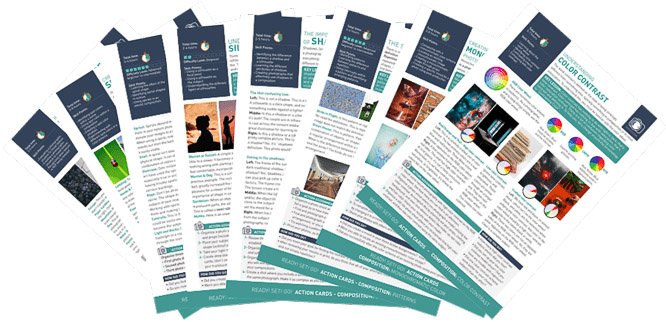Knowing when to use a narrow vs wide aperture can distinguish between a good and a bad picture. Our article teaches you arguably the most important setting on your camera—the aperture. So, open your mind, and we’ll shed some light on the subject!

- Master manual mode to capture moments you’re proud of.
- Overcome the frustration of missed shots with quick exposure settings.
- Benefit from visuals with hundreds of images and illustrations.
What Is a Wide Aperture?
A wide aperture means the lens opening is larger, letting more enter it. The aperture is the hole in the lens that lets light through. You can make this hole larger or smaller. It’s like a faucet that controls how much water comes through, depending on how wide you open it.
Here are some other details you should know about your lens and aperture:
- Diaphragm Ring: The aperture is controlled by a ring within your lens. Every conventional lens has this ring. (Catadioptric or “mirror” telephoto lenses have a fixed aperture.)
- F-Number: The f-number describes the aperture’s size. Larger numbers mean a smaller opening (narrow aperture). Smaller numbers mean larger openings (wide aperture). A large aperture is f/1.8, while f/22 is considered small.
- Lenses: Prime lenses always have the widest apertures. They can be as large as f/0.85! The largest aperture available on zoom lenses is f/2.8.
- Exposure Value: Aperture is one of three settings that controls exposure value. For any given amount of light, there is an exposure value. You combine the three elements of exposure to provide the right amount of light for your photo. Aperture is one element. The other settings are ISO and shutter speed.

Why It’s Important to Keep the Aperture Wide
A wide aperture does more than change how much light reaches your sensor or film. Understanding the effects of aperture is essential for getting the most out of your photography.
It’s important to note that, for this discussion, an aperture of f/2.8 is considered a wide aperture (large). You must use this aperture setting or even larger to achieve some of the effects we discuss.
Depth of Field With Wide Apertures
When you focus your camera, you, of course, choose a subject to focus on. For instance, it could be a person in a portrait photo. One main effect of your aperture is how much is focused in front and behind the focal point.
A wide aperture produces a shallow depth of field. This narrower focus makes only the main subject sharp. The area in front and behind the subject is out of focus.
A large aperture is perfect for isolating your subject using focus. It provides less distraction from the main subject of the photo. You can use a wide aperture to provide an out-of-focus foreground and background.
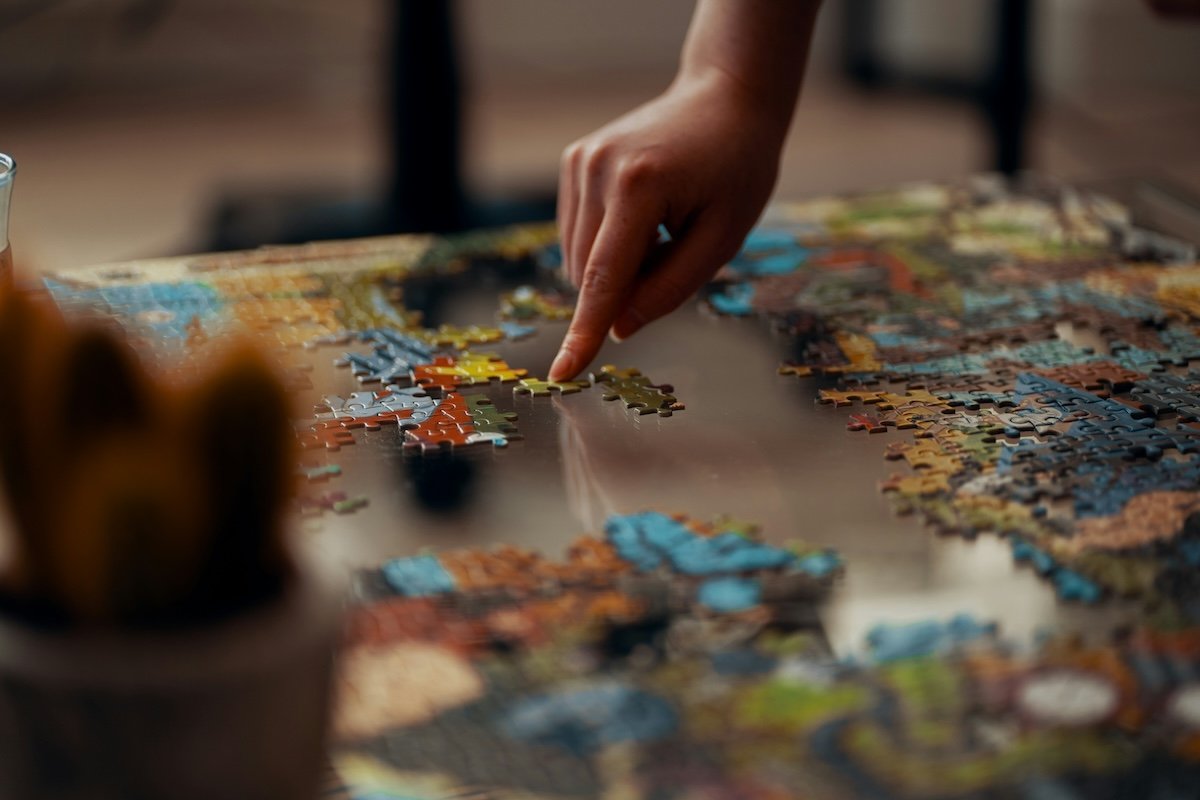
Bokeh
If the main subject is sharp, there can be a large part of the photo that isn’t. This area is often referred to by photographers as bokeh. Wide apertures help create this bokeh effect.
But not all lenses create bokeh equally. Reviews often mention the quality of bokeh produced by a lens. The best examples paint a smooth, creamy background that doesn’t distract.
It’s possible to do even more with bokeh. You can create shaped bokeh like hearts, stars, or electric bolts.
To do this, you cut a black circle from some paper. Then, cut the shape you desire into the black circle and ensure it is in the center of your black paper disc. Place it over your lens and shoot away!
As you can see below, the main effect of a wide aperture is its distinctive bokeh background.

Low-Light Photography
A lens with a wide maximum aperture is called “fast.” Because it lets in a good amount of light quickly, a good fast lens is a must-have for low-light photography. But modern cameras perform extraordinary things with high ISOs, making a fast lens less important.
You’ll often struggle for light without a large aperture, especially with night street photography. Get a good-quality 50mm lens with a wide aperture, and you’ll be good for most street photography camera settings.
Photographing at night almost certainly means using a wide aperture.
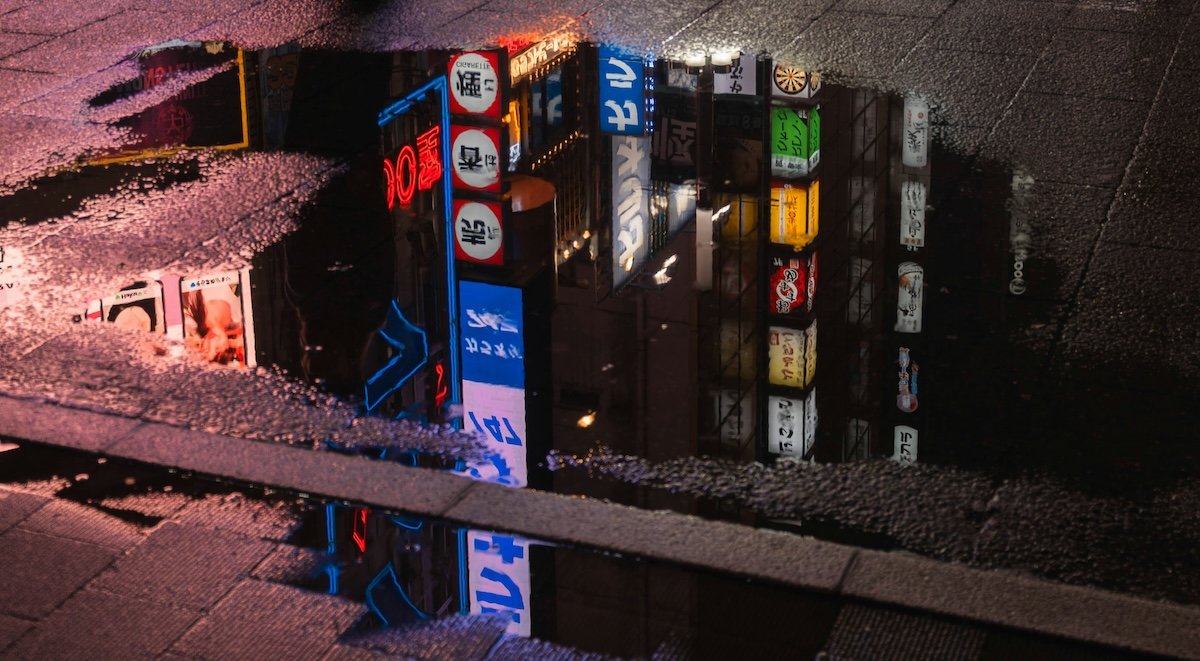
Action Photography
Action photography is about fast shutter speeds, but wide apertures also play a part. A large aperture lets enough light enter the camera even with a fast shutter speed.
Action photography often means sports photography, which makes using a wide aperture tricky. That’s due to the shallow depth of field. And because the main subject is moving, you often need to be moving the camera.
Even with modern autofocus (AF) systems, it can be difficult to get the focus right. But your image looks amazing when you do, and you can achieve this with a large aperture.
Get to know your camera’s focus-tracking function. It helps you keep your subject focused. A wide aperture allowed a fast enough shutter speed to capture this skateboarder below mid-air.
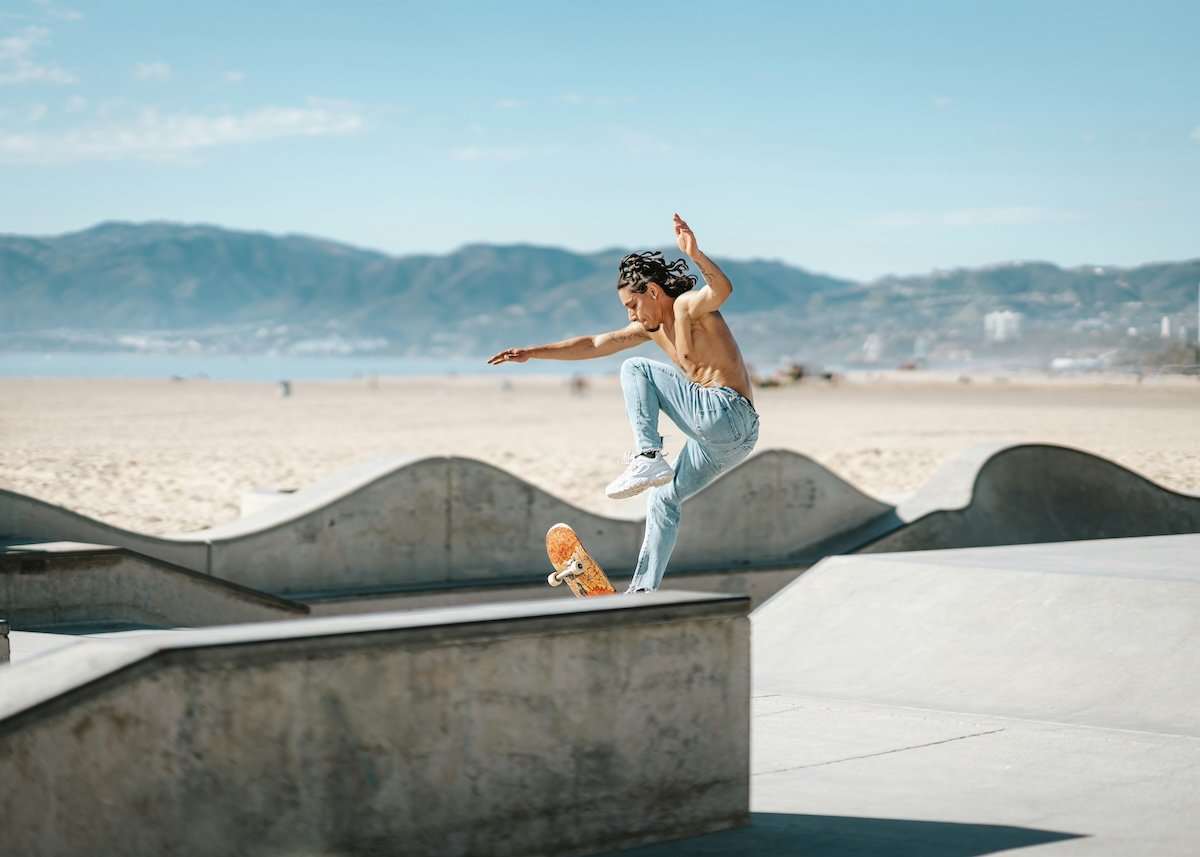
The Importance of Narrow Apertures
At the other end of the scale is a narrow aperture, meaning an aperture of f/16 or smaller. It’s important to note that you wouldn’t normally use an aperture this small for landscape photos.
Depending on the lens, the sharpest focus is usually achieved at f/8 or f/11. The following are ways in which narrow apertures can benefit your photography.
Depth of Field With a Narrow Aperture
If you want elements in the foreground and background of your photo to be in focus, you need to use a narrow aperture. All other things being equal, wide-angle lenses have a greater depth of field than telephoto.
The effect of this narrow aperture is a large depth of field, with most areas of the photo in focus. For example, if you have a line of people and want them all to be in focus, you need to use a large depth of field.
The photographer used a narrower aperture of f/9 so that everyone was in focus below.

Landscape Photos
As mentioned, most landscape photos should be photographed at that lens’s sweet spot aperture, often f/8.
With a narrower (smaller) aperture than that, there is usually a drop-off in sharpness due to lens construction. But if there are strong foreground elements that you want to be in focus, then a narrower aperture is needed.
Focusing on an object very close to the camera, even using a small aperture, might not be enough to keep the background sharp. In that case, bracketing your images for focus is an option.
Focus-stacked images can then correct focus problems in post-processing. Some modern cameras even handle the focus stacking for you! For this landscape below, the photographer used an f/8.0 aperture so the background would be more focused.
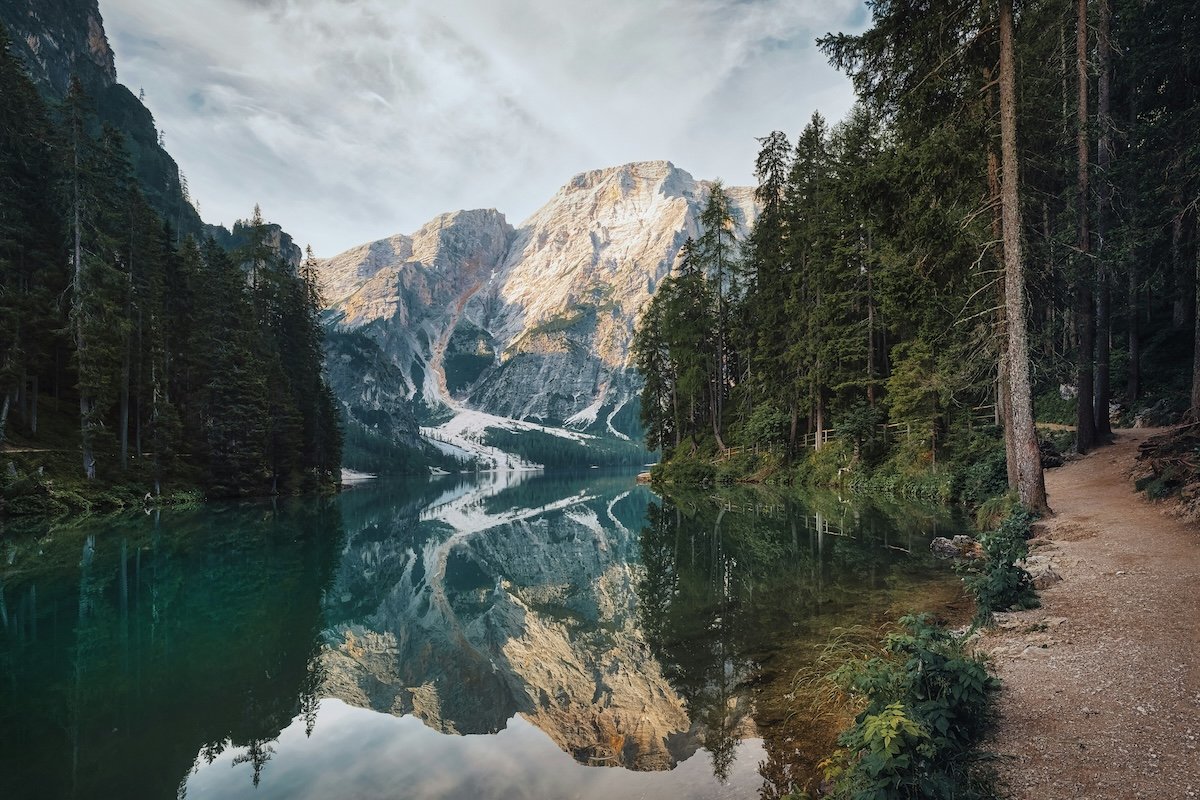
Starburst Effects
A narrow aperture is the only way to achieve a starburst effect (sun stars), which causes a point of light to have spikes.
The type of diaphragm your lens has will affect the number of spikes produced. If the diaphragm has an even number of blades, then the number of blades equals the number of starburst spikes produced.
If the number of blades is uneven, you get double the number of spikes. For instance, 9 blades produce a starburst with 18 spikes. You can also use a starburst filter to create spikes, but it looks better and more natural using a small aperture.
It’s possible to produce the starburst effect from street lights and even sunlight. Follow these instructions to be successful with these shots:
- Street Lights: You need a tripod since narrow apertures and street lights mean a long exposure at night. Experiment with the aperture a little. The smaller the aperture, the longer and thinner the spikes will be.
- Sunlight: Photographing the whole sun won’t produce a good starburst effect. The sun likely overexposes your photo if you’re aiming at it. It’s also not good for your eyes unless the sun is nearing sunset. So, finding ways of reducing the amount of sun photographed is best. In other words, find a way of blocking the sun. You can do this by using leaves on a tree, clouds as they pass in the sky, or the horizon line as the sun begins to set.
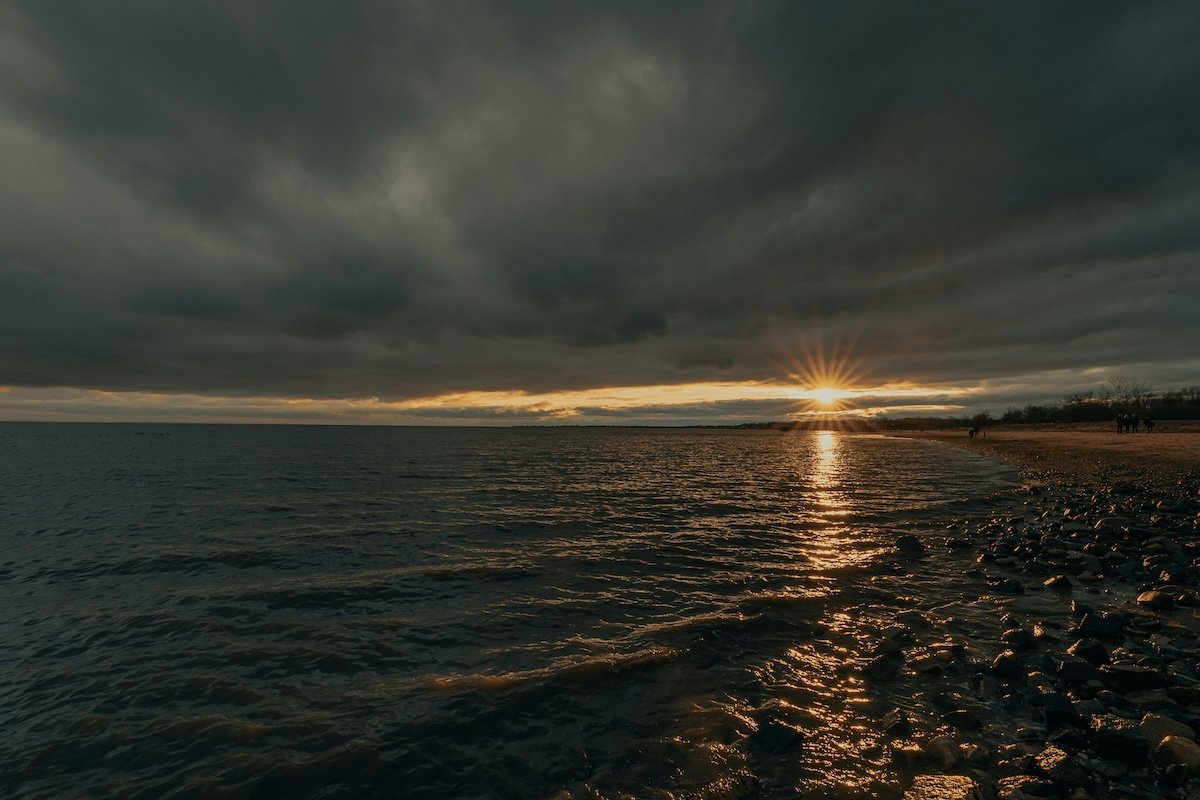
Narrow Apertures and Slow Shutter Speeds
The laws of physics dictate that you must adjust your ISO or shutter speed to use a small aperture. A small aperture results in slow shutter speeds, especially when shooting into the evening.
Slow shutter speeds in conjunction with small apertures can be interesting for cityscapes. You get light trails from cars and starburst effects from the stationary street lights.
Other effects that you can get from slow shutter speed are the flattening of water or making white water appear like silk. These photos, often taken during the day, need a small aperture.
It’s best to take long exposures, between one and 20 seconds, to achieve the silky water effect. You might also need a neutral density (ND) filter.
A smaller aperture is useful when panning to follow a moving object. The increased depth of field makes it easier to achieve a sharper focus on the object you’re panning. A narrow aperture can also help to slow the shutter speed and create motion blur.

Conclusion: Wide vs Narrow Aperture
Learning about using a wide aperture vs a narrow aperture is important for your photography. This setting has a great deal of creative potential. You also need to know about its relationship with shutter speed.
Many photographers use aperture priority mode for many of their photos. It speeds up changing your settings—the aperture is that important.
How do you use aperture in your photography? Do you use aperture priority, or do you go fully manual? We’d love to see example photos that have used aperture for creative effects.

- Master manual mode to capture moments you’re proud of.
- Overcome the frustration of missed shots with quick exposure settings.
- Benefit from visuals with hundreds of images and illustrations.
